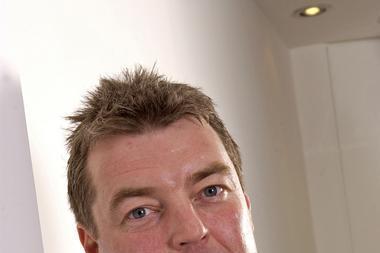Aviva and AXA surprised everybody this year when they announced a return to the corporate risks sector. Leveraging their core strengths and client bases, each insurer has big premiums in its sights. But they must also tackle brokers’ doubts about their long-term ambitions
The roads were icy and heavy snow was falling, but senior figures at Aviva were grinning widely and warming the hands of 13 major brokers. It was 10 January this year and the likes of Aviva UK chief executive Mark Hodges and general insurance boss David McMillan were detailing the group’s revival in big-ticket corporate risk work.
Since the previous September, Aviva had been talking to potential clients about its soon-to-be-launched Corporate Risk Solutions business, which would focus on UK companies of around FTSE-350 size or £100m-plus turnover that are paying more than £100,000 per product line. Aviva has been perceived to be out of the market for nearly a decade, having focused on small and medium-sized enterprises (SMEs) and personal lines since the merger of Norwich Union and CGU.
After the meeting, one broker reportedly told Aviva executives: “You have caused a real stir coming into this market; it has been the most talked-about event in the London market in the past five years. Many of your competitors are very concerned that you’ll be targeting their business.”
Another added: “Good to see Aviva coming into this market. You’ve has been a sleeping giant that has finally woken up.”
Established players in the corporate risks market, such as RSA, ACE, Chartis, Zurich and Allianz, face a twin threat, however, as AXA is also piling in with a plan to crack mid-corporate risks. Aviva wants to be a top-three player within three to five years and AXA seems equally ambitious, having already developed a five-year business plan to take on the big boys.
However, there are doubts over both companies’ long-term commitment to the sector, having been so reluctant to re-enter the market when it was struggling during the downturn. A second slump might see another reassessment – and a return to focusing solely on the core sectors they know so well.
Either way, a busy marketplace is about to get even more crowded, with the extra capacity likely to soften rates.
Grand ambitions
Aviva Corporate Risk Solutions account director Owen Thomas, part of the three-person management team that was set up earlier this year, was one of those senior figures shaking hands back in January . He points to the appointment of Dipak Warren as a signal of Aviva’s intent.
Warren will head up the division when she joins in September from Mitsui Sumitomo Insurance, where she has established herself as a leading player in corporate risks. Aviva has also announced its first clients, car leasing firm Streetcar and charity Marie Curie Cancer Care.
Thomas says that it is a common misconception that Aviva ever pulled out of the market, though he does admit that there was a retrenchment. He says that Aviva still had 3%-4% of the market, though the new team needs to at least double that share to threaten the likes of RSA and Allianz.
Meanwhile, the insurer already has a particular strength in property, and the group has the Bank of England estate account. Thomas is also keen to emphasise that Aviva’s strength in the SME market, in which it has a 16%-20% share, translates into a balance sheet that will be able to fully back a new venture. “[Mid-corporate risks] is a very competitive market, but our capital base is strong, which is obviously a huge plus for us,” he says. “We’re doing more than just talking about it, and that’s why we’re buying in skills from the market.”
By the end of the year, this experienced Aviva team should number 35, not including the property part of the business.
AXA, meanwhile, launched its mid-corporate business earlier this year. It wrote £3m of business in its first month as the group looked to fill the gap in its portfolio in the £100m-£500m turnover market.
Like Aviva, AXA already had some work in this end of the property market, writing about £80m of premiums. AXA is aiming for more than £100m of the market by the end of 2010.
AXA’s head of specialist markets Mike Philips says: “We have done a lot of thinking and research into the sector, and engaged Ernst & Young to do research for the long term.”
AXA is looking to have 14 staff across regional teams based in Manchester, Birmingham and London – and perhaps Glasgow, too. It will also have a 75-strong risk management team to fall back on.
“We are looking at sectors we know we have a lot of strength in, such as manufacturing and property,” Philips says. “A lot of the brokers that we talk to have said that the strength of the AXA brand is a positive attribute.”
The competition
However, Philips recognises that competition will be fierce. He cites the “depth of expertise” at RSA, which is why he is trying to nab skilled staff with years of background in the sector. For example, Richard Gregory has been appointed as senior fleet underwriter of the division, joining from Mitsui Sumitomo.
Publicly, rivals insist that they aren’t spooked. For example, Brit Insurance’s head of UK distribution, Simon Cooter, says: “This is a difficult market to break into. The clients are very demanding – this is not just about price, there’s a much more detailed assessment of risks. You need to build up some real regional infrastructure.”
Brit has a London office, five regional bases and a satellite in Northern Ireland. All divisions know their markets well and can demonstrate that they can meet their clients’ bespoke requirements, though policies for straightforward SMEs tend to be more off-the-peg.
Cooter also hints at what is a widespread concern about Aviva’s commitment to the market, given what is rightly or wrongly perceived to be a 10-year break: “Brokers are looking for some confidence that the insurer is in the market for the long term. Brokers at least have a concern if an insurer is entering a market that they exited previously. Just because you have an SME regional presence doesn’t mean that you have big-ticket credibility.”
He believes that it takes three to five years to establish that credibility and build up a cohesive, respected team.
Are you experienced?
The Broker Network chairman Grant Ellis says that while he understands the rationale – that insurers of AXA and Aviva’s sizes should have exposure to multibillion-pound markets – behind the move, there are doubts over their relative lack of experience.
The problem here is that with big balance sheets, insurance giants might be tempted to take risks. “They need to ask themselves how they avoid pricing [policies] too low when you want to build a position against incumbent players,” Ellis says. “When you’re the new kid on the block, one of the challenges that you face is wrestling business from well-established players like QBE and Travelers. There are reservations of a lack of experience and expertise in the market.”
QBE’s senior property underwriter and major client development manager for the north, Anna Spink, says that the duo are entering a market “where there is already capacity”. Existing market leaders will face further price pressures, while AXA and Aviva will find it even more difficult to break through.
Defensive strategies are in place. QBE has recently moved to a more comprehensive service, where product lines are sold as packages rather than individually. “We’re bringing together property, casualty, motor fleet and so on. Also, with existing clients we are bridging gaps that we might have – identifying the insurance and risk managers and meeting them through brokers.”
As each corporate’s needs are so different, it is important to have a personal touch when designing their policies. “The focus has to be on the overall client operation,” Spink explains. “And you have to have a proven pedigree.”
The big three in the market should have a few years’ lead over AXA and Aviva, but it could be that the smaller, more regional players are quickly squeezed by the two big new entrants.
XL Insurance’s international property and casualty regional operating officer Donal Kelly speaks for many when he jokes: “There’s more competition in the marketplace and we’ll just have to deal with that. Good luck to them – but not too much luck.”
However, with their grand brands and powerful balance sheets attracting both star names and blue chip clients, Aviva and AXA are unlikely to need too much luck.
What they will need is to help brokers get over their doubts about the companies’ long-term commitment to a sector that they have previously turned their back on.
Aviva’s corporate risks strategy
• After being out of the corporate risks market for almost a decade, Aviva launched its Corporate Risks Solutions arm this year.
• The insurer aims to be a top-three player within three to five years.
• The business has already announced its first clients: car leasing firm Streetcar and charity Marie Curie Cancer Care.
• Aviva believes its 16%-20% share of the SME market will aid its success.
AXA’s corporate risks strategy
• AXA has announced a five-year business plan to take on the leading players in the corporate risks market.
• It is aiming to achieve over £100m in premium by the end of this year, serviced by 14 dedicated staff and backed by a 75-strong risk management team.
• The insurer’s strategy involves focusing on sectors in which it already has strength in, such as manufacturing and property. IT
Hosted by comedian and actor Tom Allen, 34 Gold, 23 Silver and 22 Bronze awards were handed out across an amazing 34 categories recognising brilliance and innovation right across the breadth of UK general insurance.














































No comments yet